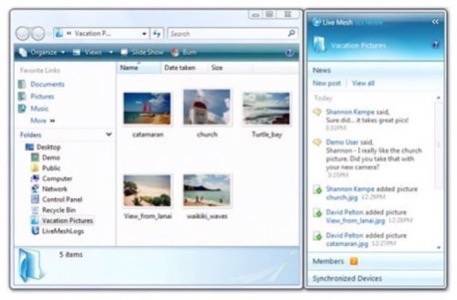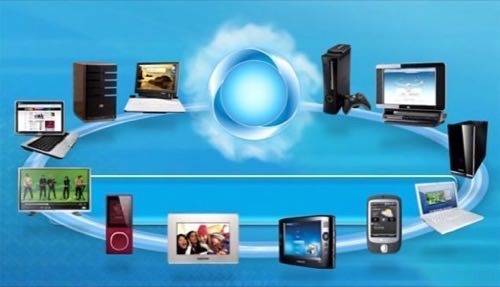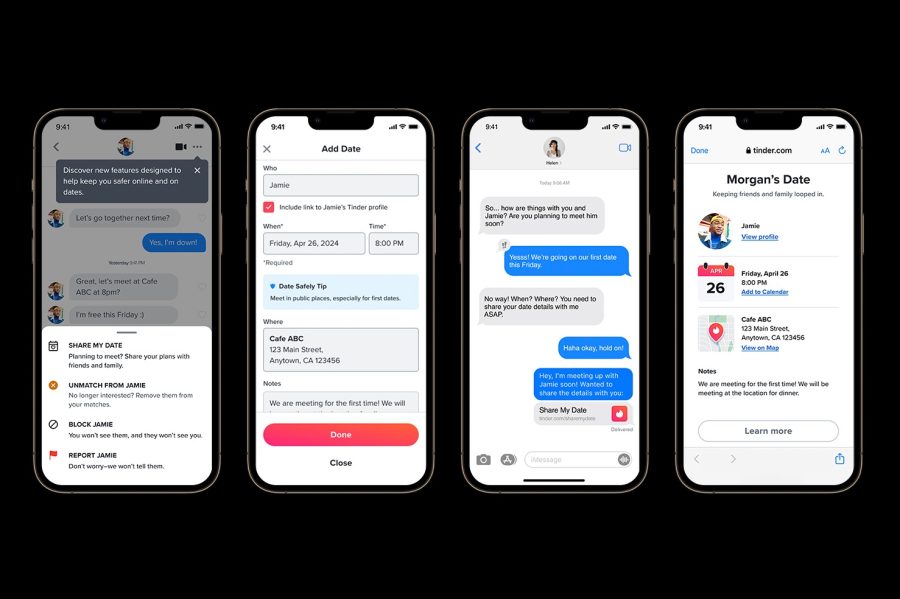The new Live Mesh service that just launched as an invite only “technology preview” is Microsoft’s attempt to tie all of our data together. Live Mesh synchronizes data across multiple devices (currently just Windows computers, but theoretically it will extend to mobile and other devices in the future) as well as to a web desktop that exists in the cloud. It can sync data across devices used by a single users, as well as create shared spaces for multiple users. On the surface, Mesh is a lot like competing file sync services such as Dropbox, SugarSync (which we covered in January), and even Microsoft’s own FolderShare product. But what sets Live Mesh apart is its platform approach.

How It Works
Essentially, Live Mesh is a collection of feeds (which can be expressed as ATOM, JSON, FeedSync, RSS, WB-XML, or POX). Every piece of data entered into a user’s Mesh — be it a file, a folder, a message, a user permission, or a new device — is rendered as a piece of information in a feed. The feeds are then synced with other devices that are part of that Mesh following rules for how to sync each particular piece of information (i.e., File A may sync with Users 1, 2, and 3, while File B may only be told to sync with Users 1 and 2).
Mesh is a combination of web based services that sync files and information across a cloud environment, and client software that allows individual devices to sync with the Mesh. This is a continuation of Microsoft’s “software plus services” strategy, in which client software is augmented by (or reliant upon) web services.
The News Feed
While Mesh doesn’t have any version control capabilities yet — a must for a service that syncs data between multiple users — it does borrow a popular feature from the web for keeping users up-to-date on what’s going on across a system: the news feed. The Live Mesh Notifier is a news feed of all the activity on a user’s Mesh. Right now that means changes made to files, folders, devices, user permissions, and comments left on files/folders.
However, because Live Mesh is a platform that seeks to interact with third party services (more on that below), it is easy to envision how much more could be pushed through the news feed. We were shown a demo application that synced tweets on Twitter with the Mesh Notifier, for example. As more services use the Live Mesh platform, could it, or a service built on top of it, eat FriendFeed’s lunch?

The Platform
What makes Live Mesh potentially very special is that Microsoft has turned synchronization into a platform. Eventually, services as well as devices will be able to hook into Mesh. We were shown some early demos of the type of things Microsoft envisions for the Mesh service that were quite impressive. In one proof-of-concept demo, a photo that was taken via a cell phone camera, was automatically synced to a Mesh that pushed the pictures out to a Facebook photo album.
It was certainly impressive to see data — in this case a cell phone camera picture — almost instantly synced across multiple devices and saved to a web service immediately after it was created. Microsoft envisions Mesh as a platform for data synchronization for any service we use and for any type of data. Ideally, for example, if someone were to comment on that photo at Facebook, the comment would sync to anywhere else that photo was hosted (your desktop computer, the desktop computers of anyone sharing the photo, your laptop, other photo sharing sites, etc.).
Taking On Google Gears?
Perhaps the most interesting bit that Microsoft demoed to us was an offline compontent of the Mesh platform. Web apps using the Mesh platform will be able to lean on the client software to take their web applications offline, including all user data, and sync it up when the user gets back online at a later time.
Microsoft is taking an offline approach that is more akin to Google Gears or Mozilla Prism than Adobe AIR — the web-to-desktop functionality of Mesh is essentially a wrapper for the actual web app. The same HTML and JavaScript, etc. runs in a desktop window in offline mode, data is stored locally, and synced later. The difference is that Microsoft is ting offline access into the Mesh service, so developers don’t just get the technology to take their apps offline, but also access to the synchronization and cloud storage services to move their data back and forth.
We’ve talked about the importance of web apps on the desktop on this blog, so this could be an important component of Mesh.

Will It Work?
It is still very early for Mesh. Microsoft intends to invite key development partners to try out the system in the next few weeks, and will roll out support for other devices (including mobile and Mac) over the next year. One thing that could hinder Mesh, though, is Microsoft’s rather confused marketing around its online services. Between Mesh, SkyDrive, Live Spaces, and FolderShare there is so much overlap in Microsoft’s services that users are bound to get confused.
Ideally, Mesh will be a platform that will tie all of Microsoft’s online storage, synchronization, and sharing services together — along with other, third party services. But the confusing muddle that is Microsoft Live could stymie mainstream adoption. Microsoft needs to clean up their act and present a more clear marketing message.
Software + services is also a potentially tougher sell than software as a service — people don’t like downloading things. Still, Microsoft has created a compelling product that they hope will standardize synchronization across the universe of devices and web services we each use every day. The prospect of getting easy access to user data on multiple devices could be attractive for developers and prompt them to embrace the platform, but it is probably too early to make any specific predictions.
Ray Ozzie Memo
Accompanying the launch of Live Mesh is a new memo from Microsoft Chief Software Architect, Ray Ozzie. It notes that Microsoft sees the Web as “the Hub of our social mesh and our device mesh.” Ozzie calls this “social mesh” and writes that “in scenarios ranging from productivity to media and entertainment, social mesh notions of linking, sharing, ranking and tagging will become as familiar as File, Edit and View.”










